Working out how to save money on food while also maintaining a healthy diet can sometimes be difficult. While there are lots of expenses you can cut out to help with the cost of living, your weekly food shop isn’t one of them. The good news is, you don’t need to sacrifice quality for cost if you’re looking to eat well on a budget.
We’ve compiled a list of simple money-saving food tips to help reduce your grocery bill. From shopping smart and meal planning to making the most of your pantry and freezer, we cover all the handy tips you need to stretch your food budget further.
In-store food shopping tips
Let’s start with our top tips for saving money on food shopping in person. There are lots of initiatives and great deals you might not be aware of that supermarkets offer. Here are some of the things to keep in mind next time you do your weekly food shop.
1. Have a shopping list & meal plan
Before you go food shopping, sit down and plan out your meals for the week. This way, you’re only including the ingredients and food that you absolutely need, rather than guessing when you’re in the store.
Digital alternatives to shopping lists include Out of Milk and AnyList, as well as Google Assistant and the Alexa App. If you have a voice assistant device, you might find it useful to be able to say “add self-raising flour to shopping list” as and when you think of something.
Pro tip: Write your list according to the layout of the store: fruits and vegetables, meat, dairy, bakery, meat etc. Being organised on your trip around the shop can save a lot of time.

2. Don't go shopping hungry
It’s a simple tip, but an important one. Going food shopping hungry is an easy way to start picking up items on impulse. When you’re hungry and your body needs food, your brain will often crave foods with high-calorie content, especially if they’re in sight.
3. Shop and scan
Keep an eye on your total bill by using shop and scan services in store. Supermarkets like Tesco, Sainsbury’s, Waitrose, and Asda offer these as either a handheld device or a downloadable app on your phone. You need to register for an account before you can use the services, which means it will keep track of any member discounts as you go. Those with loyalty cards can also benefit from personalised offers and discounts, depending on the supermarket.
Don’t have a device in your chosen store? Open up your calculator app on your smartphone and add up as you go.
4. Is it really a special offer?
It’s easy to be drawn to special offers in shops – that’s exactly how they’re designed. But before you go for the deal, take a few seconds to consider what you’re buying. Buying more items or a larger amount than you need just means you’re spending more money for no reason, especially if the item’s perishable. Pantry items or things like washing powder can be more worthwhile when it comes to multi-buy offers.
Supermarkets have been known to inflate a deal however they can. Marketing tricks include increasing the price for multi-buy deals or smudging the original price when the item’s on offer. So if it doesn’t seem like a particularly good deal, it probably isn’t.
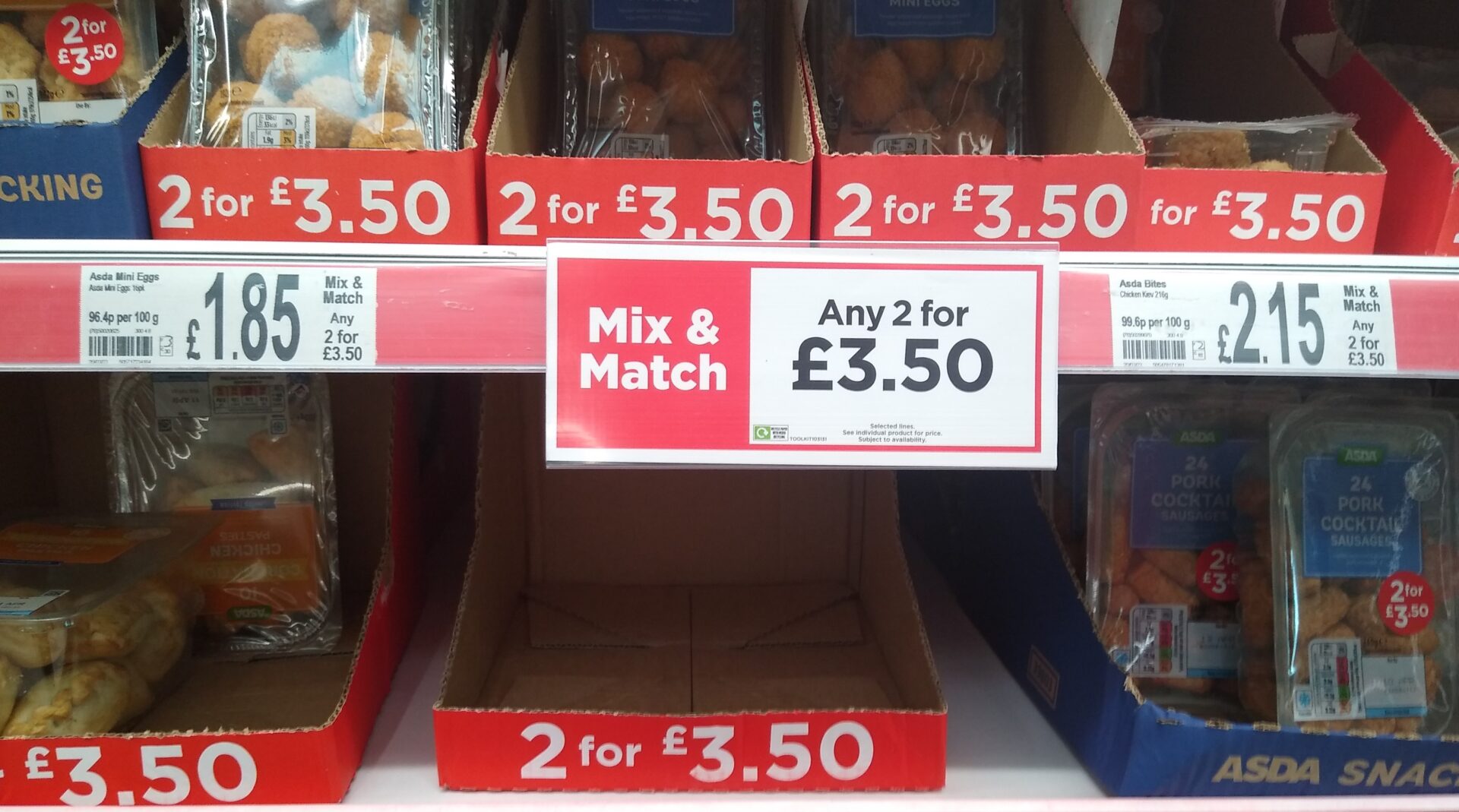
5. Choose your times wisely
If you have a little flexibility with the times you do your food shopping, you can bag more deals. Those looking to cash in on ‘reduced to clear’ deals will usually have more luck later in the day. Each supermarket and individual store is different, but you’ll often find heavily discounted items around an hour before closing (deli and other counters may be earlier).
These items are usually just about to go out of date, so make sure it’s something you can use in time, but ideally, something you actually need. You should also check the label to see the original price and how much of a discount you’d be getting.
Pro tip: Extend the life of your yellow label discounts by popping them in the freezer until you’re ready to use them.
6. Frozen isn’t always unhealthy
Frozen food can get a bad rap, but it's not all bad, especially if you’re extending the shelf life of fresh fruit and vegetables. Frozen vegetables can be just as healthy as fresh, as they are frozen almost immediately after they are harvested and are able to retain their nutrients – sometimes more so than fresh food.
Just because it’s frozen doesn’t mean you can keep it forever. Store-bought frozen fruit and vegetables tend to last around eight to 12 months, whereas cooked leftovers should be eaten within three. Make sure you label any Tupperware containing leftovers so you’re eating them while they’re still good.
7. Check out ‘wonky’ fruit & veg
Unfortunately, not all food is created equal, and consumers can be picky about what their fruit & vegetables look like. In recent years, some shops have remedied this by releasing some of the ‘uglier’ products under their own line at a reduced price. This can include food that’s misshapen, smaller than usual, or larger than usual.
Check out the supermarkets offering 'wonky' or leftover fruit and veg.
Supermarket | Range | Box |
|---|---|---|
Tesco | Perfectly Imperfect | X |
Sainsbury's | X | Taste Me, Don't Waste Me £2 |
Aldi | Wonky | X |
Morrisons | Naturally Wonky | X |
Lidl | X | Too Good To Waste £1.50 |
Waitrose | A Little Less Than Perfect | X |
You can find Aldi and Morrisons on Too Good To Go. Pick up a surprise bag for £3.30 and £3.09 respectively.
8. Look at the price per unit
Instead of comparing the price per item, compare the price per unit. This makes it easier when you’re comparing two different brands with two different sizes. You’ll be able to see what the price is per 100ml or 100g and get more bang for your buck.
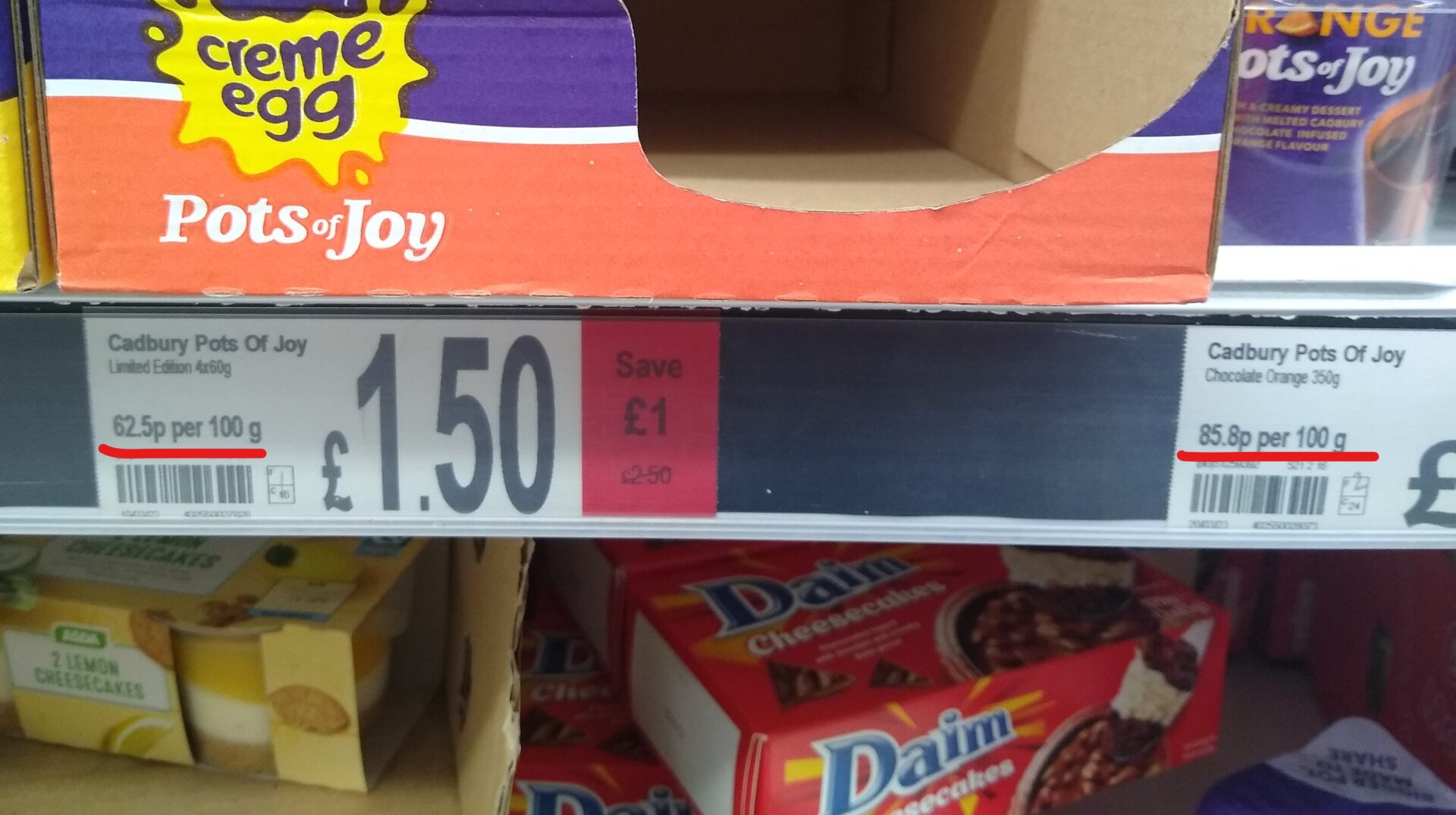
9. Swap brands for the supermarket’s own
Opting for the supermarket’s brand rather than the pricier counterpart can save money on food shopping. You don’t always get what you pay for, which is particularly evident when you compare the quality between brands.
This is once more a case of clever marketing: nice packaging, fancy font, and words like ‘premium’ or ‘finest’. You don’t have to go for the cheapest no-frills option, but trying a variety of lower-priced brand alternatives can prove effective if you want to eat well for less. Do you notice a difference in quality when you downgrade your brand choice?
10. Think about ingredients
Food shopping on a budget isn’t just about buying cheap foods, but balancing cost and quality. Opting for ingredients and whole foods that keep you fuller for longer can be a great way to eat well for less.
There are lots of low-price foods with high nutritional value like beans, lentils, potatoes and sweet potatoes, eggs, and oats. Aiming for foods that contain complex carbohydrates, healthy fats, fibre, and protein will give you a more even release of energy throughout the day.
They’re more cost-effective than cheap processed foods that contain fewer nutrients and more calories, but won’t sustain you (so you’ll end up needing to buy more).
It's really simple: our site takes just 30 seconds when you buy online.
You do the shopping, we'll track your purchase, and then you'll get cashback in your account to withdraw to your bank or as a gift card.
Here's how to get your £15 offer;
- Click: Click the green button
- Join: Create an account
- Shop: Browse brands on our site
- Buy: Click Get Cashback then make a purchase
- Enjoy: We'll add £15 to your account once we track your purchase
How does TopCashback benefit? We make money when you buy from supported brands, which allows us to offer cashback with no hidden fees.
11. Opt for cheaper cuts of meat
Meat can be an expensive item on the grocery list, but you can keep the costs down by opting for cheaper cuts. Try alternatives like pork belly instead of loin, beef mince instead of steak, lamb shoulder instead of leg, and chicken thighs instead of breast.
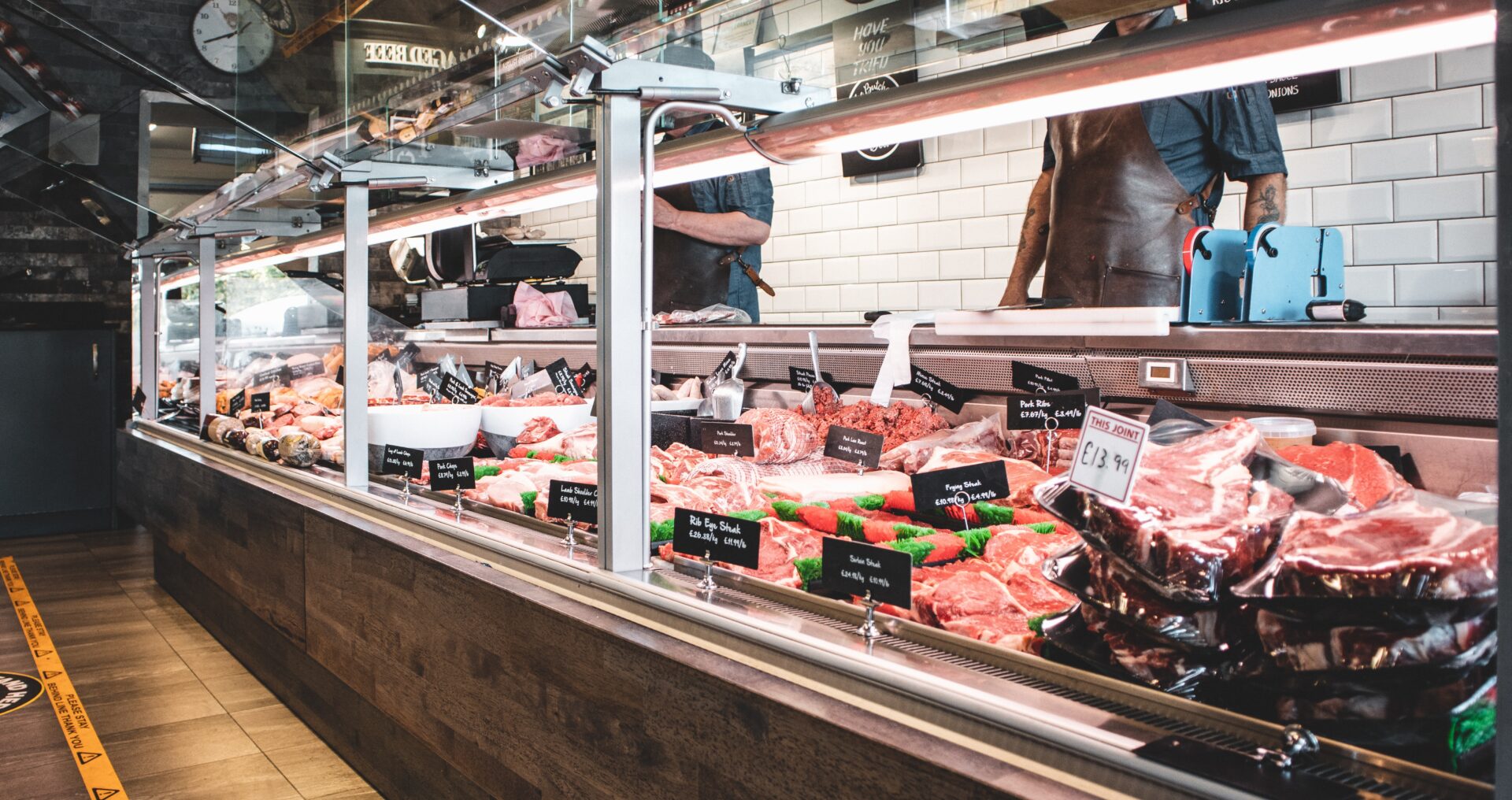
12. Reduce meat consumption
Try out a ‘flexitarian’ diet that reduces your meat consumption without going fully plant-based. You can swap out a few meaty meals for veggie ones, or go half and half with your meat content. There are lots of veggie alternatives for getting your protein servings through the day, like beans, eggs, chickpeas, lentils, and tofu.
TopCashback staff member Matt says: “For meals like spaghetti bolognese, I have started using half meat and half something else like lentils to reduce meat content and cost.”
13. Shop in season
Fresh fruit and veg is generally cheaper when it’s in season. Non-seasonal produce is flown over from other countries, meaning it’s usually more expensive and will have a shorter period when it’s fresh and flavourful. Keep your tomatoes and berries for summer consumption and broccoli and leek during the winter. Of course, if you follow tip #6, you can make use of the frozen section and stock up on fresh berries even in the winter.
14. Get cashback from credit cards or banking schemes
One of the perks of credit cards is that certain ones will offer cashback on purchases. Many credit cards will offer a cashback boost within the first three months, so it’s a good idea to take advantage of this on big spends like your weekly food shop. Make sure you’re always paying in full every month so you’re not paying any interest (which could cancel out your cashback anyway).
Keep your eye out for special banking schemes that offer supermarket cashback for limited times. Banks like Nationwide are known to offer cashback rates on supermarket shops for two to three months at a time, even on debit cards.
Some banks offer cashback schemes for a monthly fee and others require a minimum spend to reap rewards like collecting supermarket loyalty points every time you spend (where points turn into vouchers). You’ll need to compare the cost with your savings and any other benefits to know whether or not it’s worth it for you.
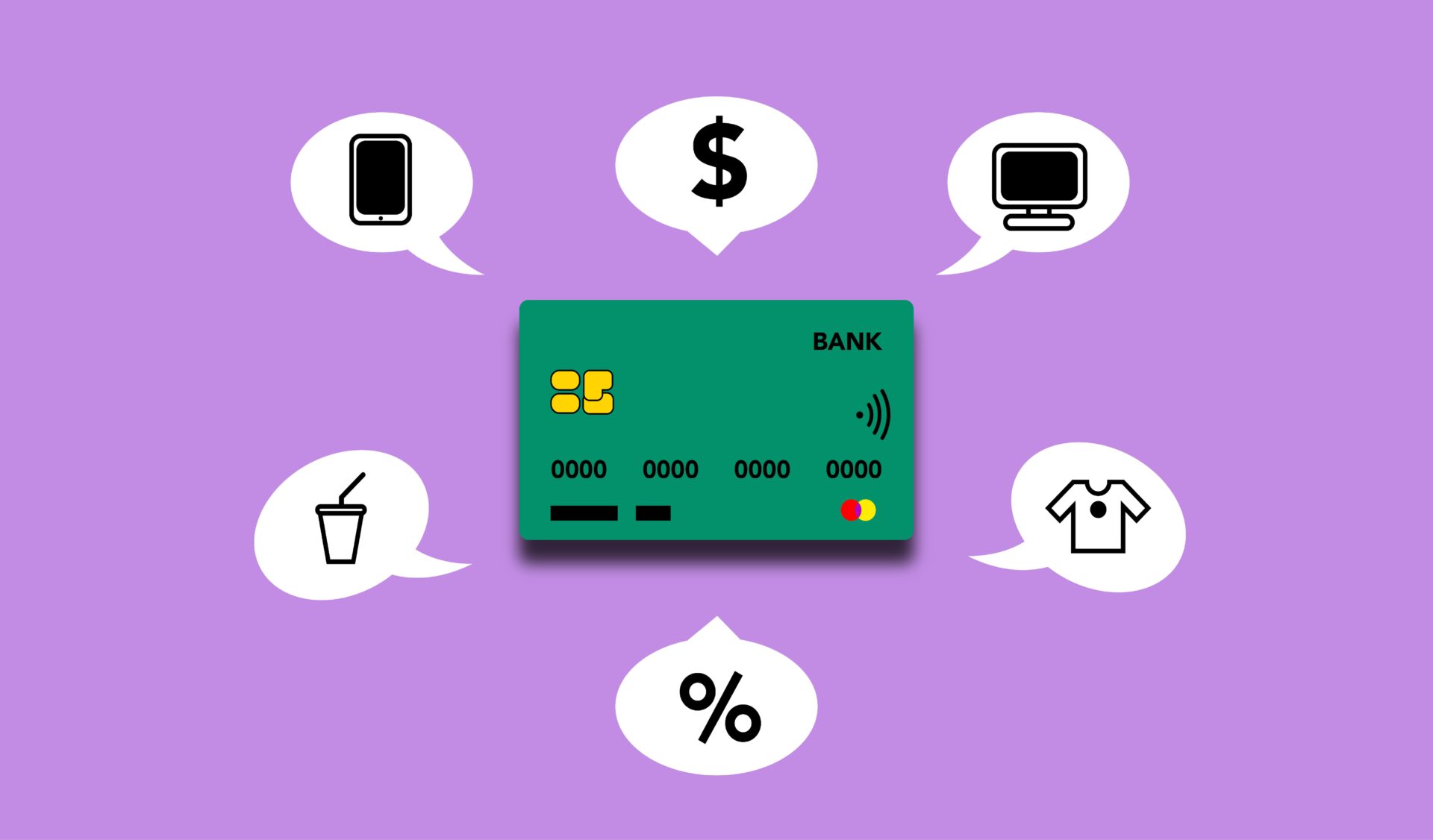
You can find more tips in our guide on budgeting for beginners.
Online food shopping tips
Ordering your food online comes with the obvious benefit of saving time in a few different ways. While you don’t get the same experience of being able to manually pick the exact items you want, there are other benefits you can take advantage of.
15. Consider substitutes
You’ve likely heard about some of the bizarre substitutions offered by supermarkets. From dishwasher tablets instead of headache tablets and sausage rolls instead of loo rolls, it’s not a perfect system.
Check the substitution policy before you order, as it varies by supermarket. With some, like Tesco, you can individually tick and untick which items you’ll accept substitutions for. Sainsbury’s will let you know in advance what they’ve chosen and you’ll be able to return the item upon delivery if you don’t want it so you can receive a refund.
Supermarkets vary in terms of what they charge you for substitutions. Some will keep the price the same, no matter what the substitute costs; some will charge you less if it costs less and more if it costs more; some will offer you a voucher for the difference between the two.
The bottom line is nothing you order online is guaranteed, so make sure you know what the supermarket policy is.
16. Delivery or click & collect?
Shopping online saves time, but with increasing delivery costs, it can be more cost-effective to pick up your own order. So which is the better option: delivery or click & collect?
You should consider the minimum basket price and the distance you need to travel to your local supermarket. If you can coincide a collection with other errands you need to go out for, it could very well be more worthwhile.
Iceland offer free delivery, although you’ll have to spend a minimum of £40 on your basket. Asda offer slots from £1.50 with no minimum spend, Morrisons from £1.50 with a £25 minimum spend, and Tesco’s flexi saver slots start at £1 on a £50 minimum spend.
Regular shoppers at Tesco, Sainsbury’s, and Asda can make use of delivery passes, which start around £3.50 a month depending on whether you want anytime, off-peak, six months, or 12 months.
Click & Collect charges start from as little as 25p at Tesco, who also offer it for free with a £2.49 a month pass. Get it for free with Sainsbury's Sun-Wed when you spend £25+, and 50p the rest of the week. Asda's charges start from 50p on baskets of £25+.
17. Make the most of filters
Sort by price from low to high to see the cheapest items first, but make sure you check the size of each product (and unit price). It’s worth filtering by offers too, where you could get a deal on multi-buys or pick up a higher-quality item for a cheaper price.
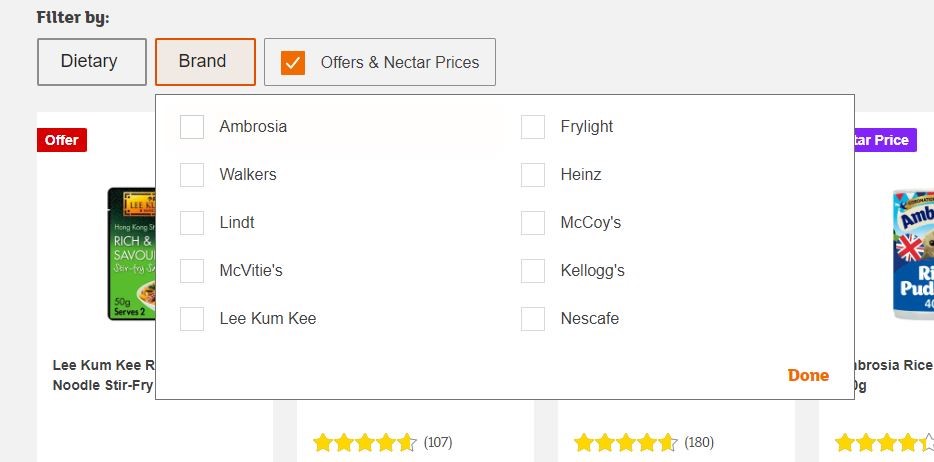
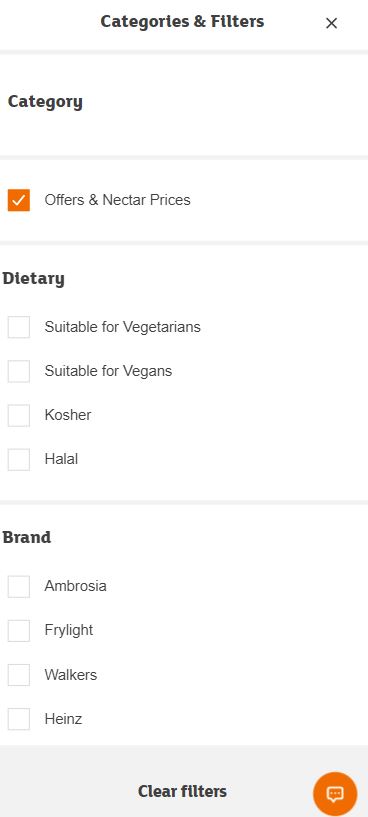
18. Get cashback shopping online
Cashback is a really simple concept that means you get free money for shopping almost exactly as you normally would. There’s just one extra step that means you visit a cashback site first which then redirects you to your chosen online shop.
We feature lots of the major supermarkets on our site, like Tesco, Sainsbury’s, Iceland, Morrisons, Waitrose, and Asda. You’ll also find places like Ocado, Abel & Cole, HelloFresh, and Gousto. Simply go to the supermarket’s page on our site, click Get Cashback, then shop as usual.
It may sound too good to be true, but it really is as simple as that. The one thing to remember is that cashback is not guaranteed and can be declined for a number of reasons. As long as you think of it as a nice bonus rather than a guaranteed saving, it’s a great way to keep money in your pocket.
Pro tip: Double up on your cashback by using credit or debit card cashback schemes in tandem with a cashback site.
Meal-planning tips
Planning meals is one of the best ways you can make the most of your food shop. Not only will it help when it comes to writing your shopping list, but if you plan it right you can be efficient with your energy usage too.
19. Batch cook
Batch cooking or bulk cooking means you save time and money in the kitchen by making larger quantities of meals in advance. This is particularly useful for stews, curries, soups, and chilies, which lend themselves to being stored and reheated.
Pop it in the fridge if you’re going to eat it within a few days or store in the freezer for a go-to meal when you don’t feel like cooking. You’ll save money on your energy usage, time on cooking, and time on washing up!
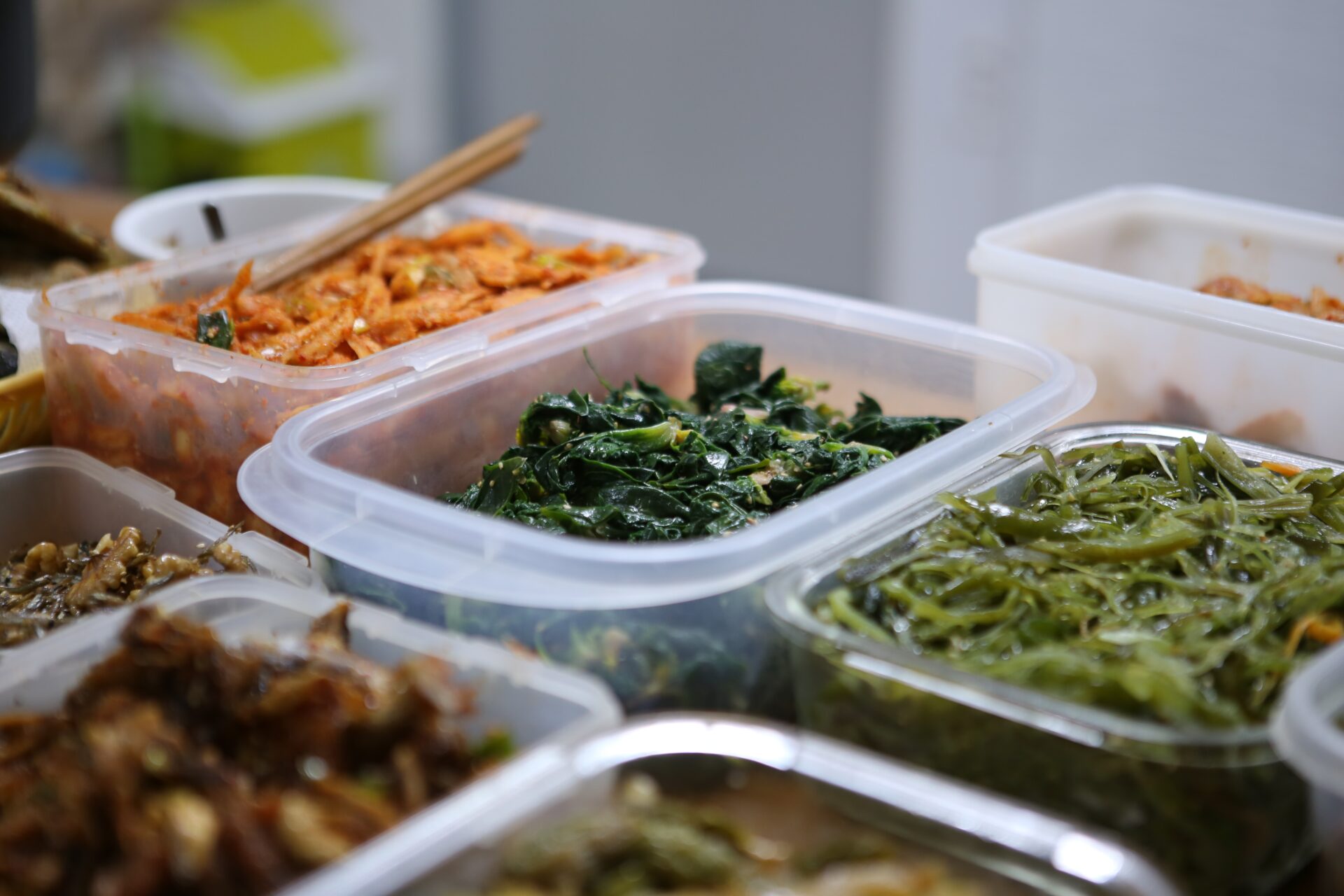
20. Cook in order of expiry date
Making use of your fridge items when they’re freshest means you’re less likely to have to throw them out. Keep a section of your fridge for the ‘use first’ items or add a label to stuff that needs to be eaten soon.
21. Plan simple meals with staple ingredients
Eating well doesn’t have to mean fancy meals. Plan simple recipes a couple of times during the week using staple pantry ingredients you usually have. These are an easy choice on those evenings you don’t have the energy for a complex recipe.
A simple pasta and sauce recipe can be made nutritious by adding a few vegetables, or use what eggs you have to make a protein-packed omelette with a side of salad.
TopCashback staff member Matt has a simple go-to meal for his family of four: “Jacket potato is always on the plan as it’s a quick, easy meal to prepare and one everyone will eat. It’s cheap and meat-free, depending on the topping.”
22. Make your own sweet treats
Shopping on a budget doesn’t mean you have to cut out treats if you have a sweet tooth. Try your hand at some super simple desserts you can whip up with just a few ingredients. There are plenty that don’t even require oven baking.
Baking your own treats will work out cheaper and last longer than stocking up on chocolate and sweets which tend to be some of the more expensive items on your bill.
We asked around at TopCashback for some favourites from our staff, which include:
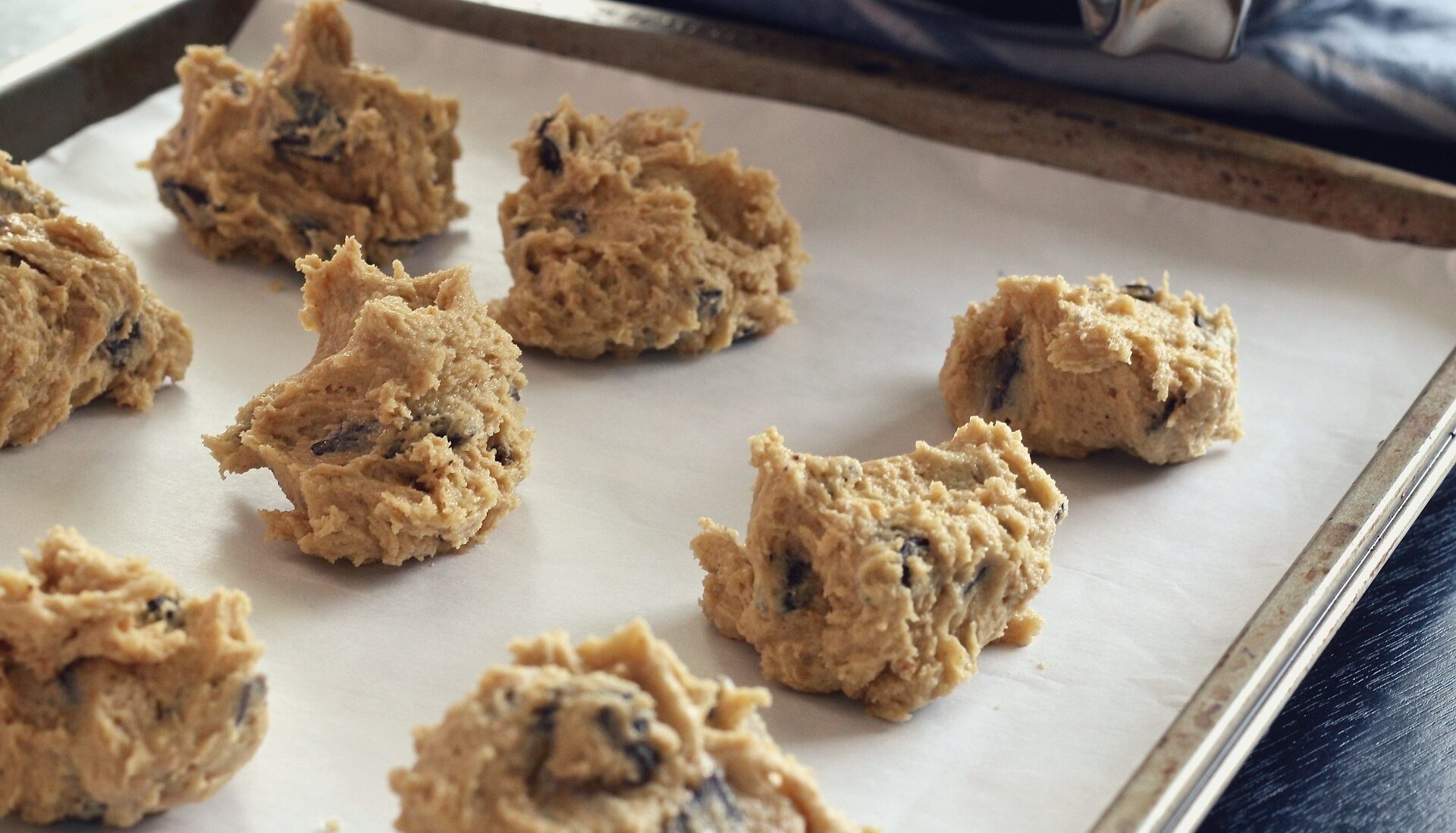
23. Be smart with your oven
Energy costs are a huge factor in meal planning right now, so it’s a good idea to use your oven sparingly. Look at your recipes for the week: which ones require oven usage? Can you batch cook them together to save energy, then freeze one for later? Or can you make some of your sweet treats at the same time as a meal?

Save money at 6,000+ top-named brands
Bonus food shopping tips
We’ve covered the main ways you can save online, in store, and at home, but we’ve got a few more bonus tips for super-savvy shoppers.
24. Cheap and free food apps
Check out apps like Too Good To Go, Karma, and Olio, where you can pick up food for discounted rates and even free.
All three apps aim to reduce food waste, and with Too Good To Go and Karma, you can pick up meals and food bags from local businesses at a hugely reduced rate. Olio is more community-centred, so relies on Food Heroes to pick up leftover food from places like Tesco and list on the app for free.
There’s a huge sliding scale of what’s available on all three apps and usually depends on your location. Try them out to see what’s on offer near you – they might end up being your new favourite way to save money on food.
Have you seen our articles on how to use Too Good To Go and how to use the Olio app?
25. Check out your local markets
Farmers' markets or local food markets can be quite a lucrative place to get good deals. Do some quick research to see what you have in the area – even better if you can get there on foot.
You might even establish a rapport with some vendors and haggle a discount on certain food items. It’s also a great way to reduce your carbon footprint and cut out the distance the food is travelling before it gets to your plate.
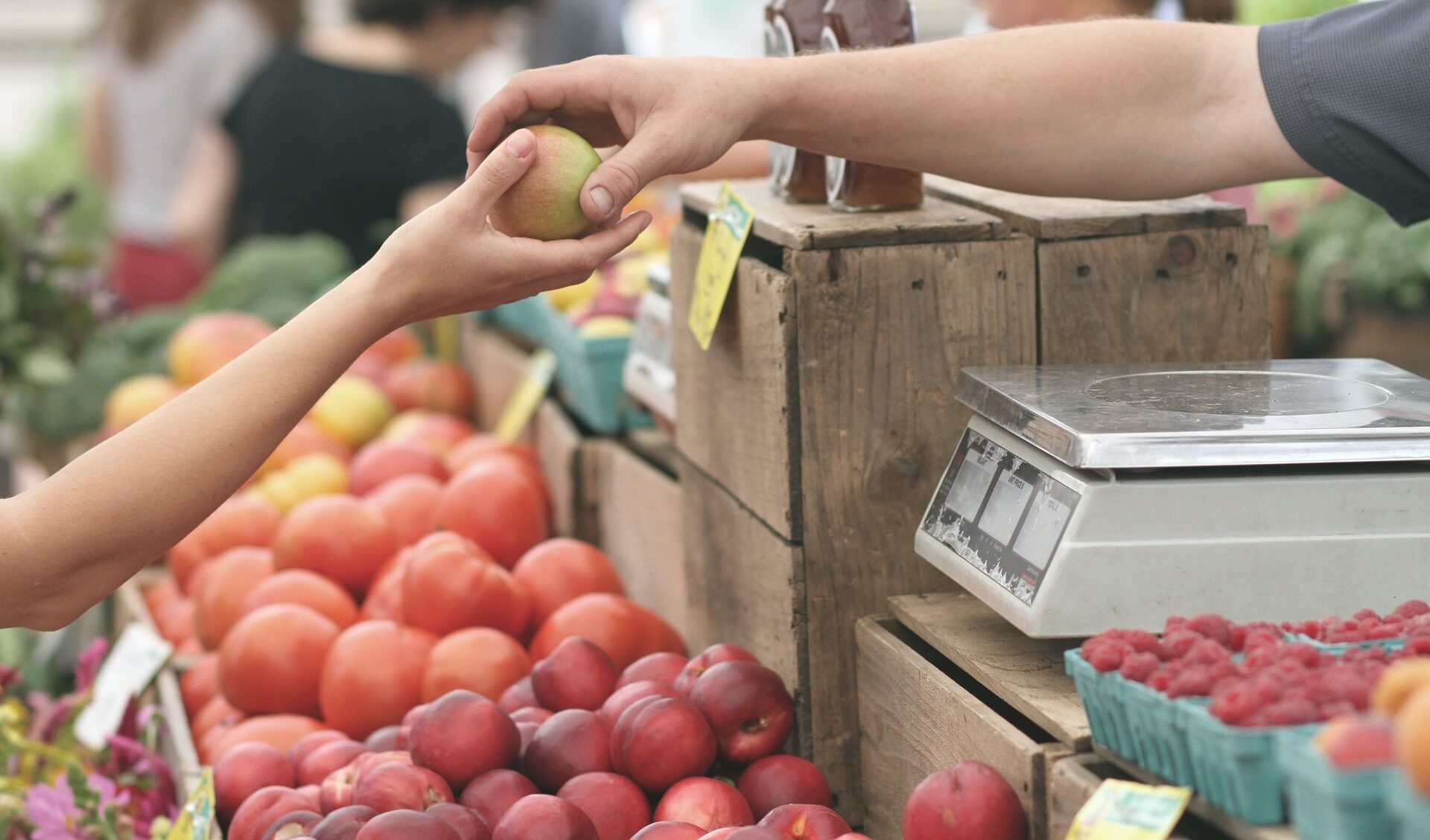
Get the best out of supermarkets
Apart from seeking out the cheapest place to do your food shop, there are lots of other savvy ways to save.
26. Sign up for loyalty schemes
Almost every supermarket has its own loyalty scheme that allows you to earn rewards and score discounts. For the most part, these are free and easy to join, although some require you to download an app, and some offer a paid version with bigger rewards.
TopCashback staff member Matt and his wife Fran use the Tesco Clubcard Plus scheme at £7.99 a month: “We use the scheme to get 10% back on two big shops in store up to a max of £20 per shop. It’s well worth the £7.99 as you can get more back than you spend. We switch it on and off so don’t always pay the monthly fee if we don’t want to.”
Check out our very own guide to supermarket loyalty schemes.
27. Mix and match your shops for the best deals
Discount supermarkets like Aldi and Lidl often give you the best value, but they can lack variety. A popular option is to buy the bulk of your groceries from a discount supermarket and then pick up any extras at a nearby shop like Tesco or Sainsbury’s.
TopCashback staff member Clare uses an app to find deals on certain items: “If I'm buying more expensive things or bulk items like washing powder, fancy chocolates, or shampoo, I use an app called trolley.co.uk to see which of the nearby supermarkets has a better offer.”
28. Coupons and vouchers
These can be found in all sorts of ways: online, in newspapers and magazines, flyers, and via supermarket loyalty schemes. Before you head out to do your weekly shop, do a quick search to see if you can bag any pennies off (“supermarket name” + “voucher” usually does the trick).
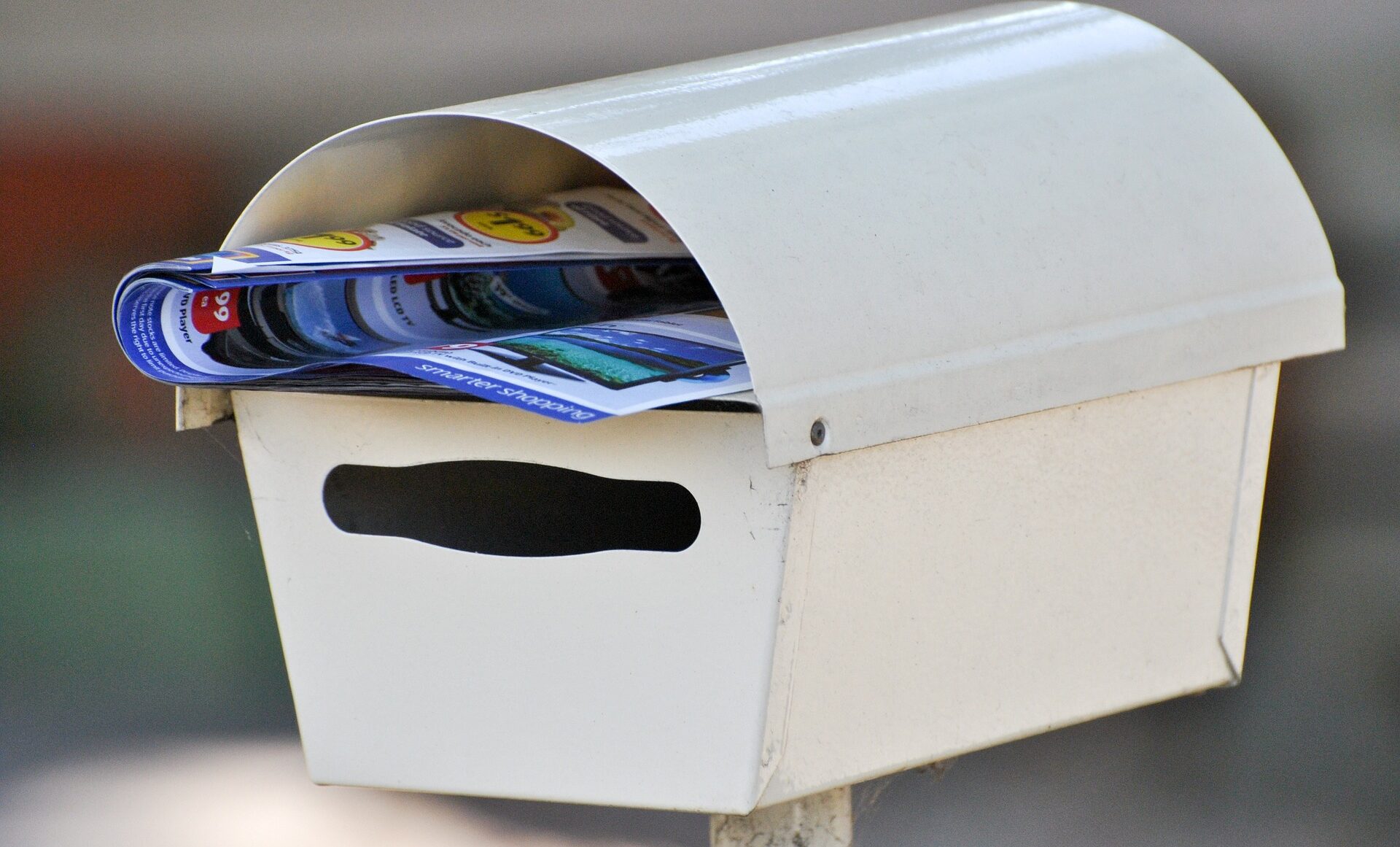
29. Exchange your cashback for vouchers or gift cards
Did you know you can get more than just cash with cashback? Our Reward Wallet means you can level up your cashback earnings at a number of retailers, including Tesco, Asda, Morrisons, and Sainsbury’s.
Cashing out via Reward Wallet means you’ll get a bonus rate with each one, usually around 4%–10%. So if you have £100 cashback and get a 6% bonus when you cash out via Tesco, you’ll get £106 in Tesco vouchers.
Matt at TopCashback used this trick with Tesco Clubcard Plus for the month to snag mega savings on his Christmas shop:
“We saved up our cashback and cashed out with Tesco so, with the bonus, we got about £220 in vouchers. This massively helped our Christmas shop; combining the 10% in-store discount for a big shop with cashback vouchers meant we paid ~£56 for what could have cost somewhere in the region of £290–£300.”
Another way you can take advantage of cashback is with our TopGiftCards feature. You can find a variety of food gift cards like Asda, Iceland, M&S, Deliveroo, and Uber Eats. You’ll get cashback when you buy a gift card, then cashback again when you use your gift card for an online purchase.
TopCashback’s Clare has a great way of maximising her cashback earnings with gift cards:
“Anytime there’s a promotion I’ll try and use it to buy a gift card. For example, if there’s a £2 bonus when you spend £10, I’ll buy a £10 gift card, get cashback on it, plus a £2 bonus in my account. Then when I spend that gift card online via TopCashback, I’ll get cashback again.”
If you're new to cashback or to our TopGiftCard feature, here's a more visual way of explaining this nifty little trick:
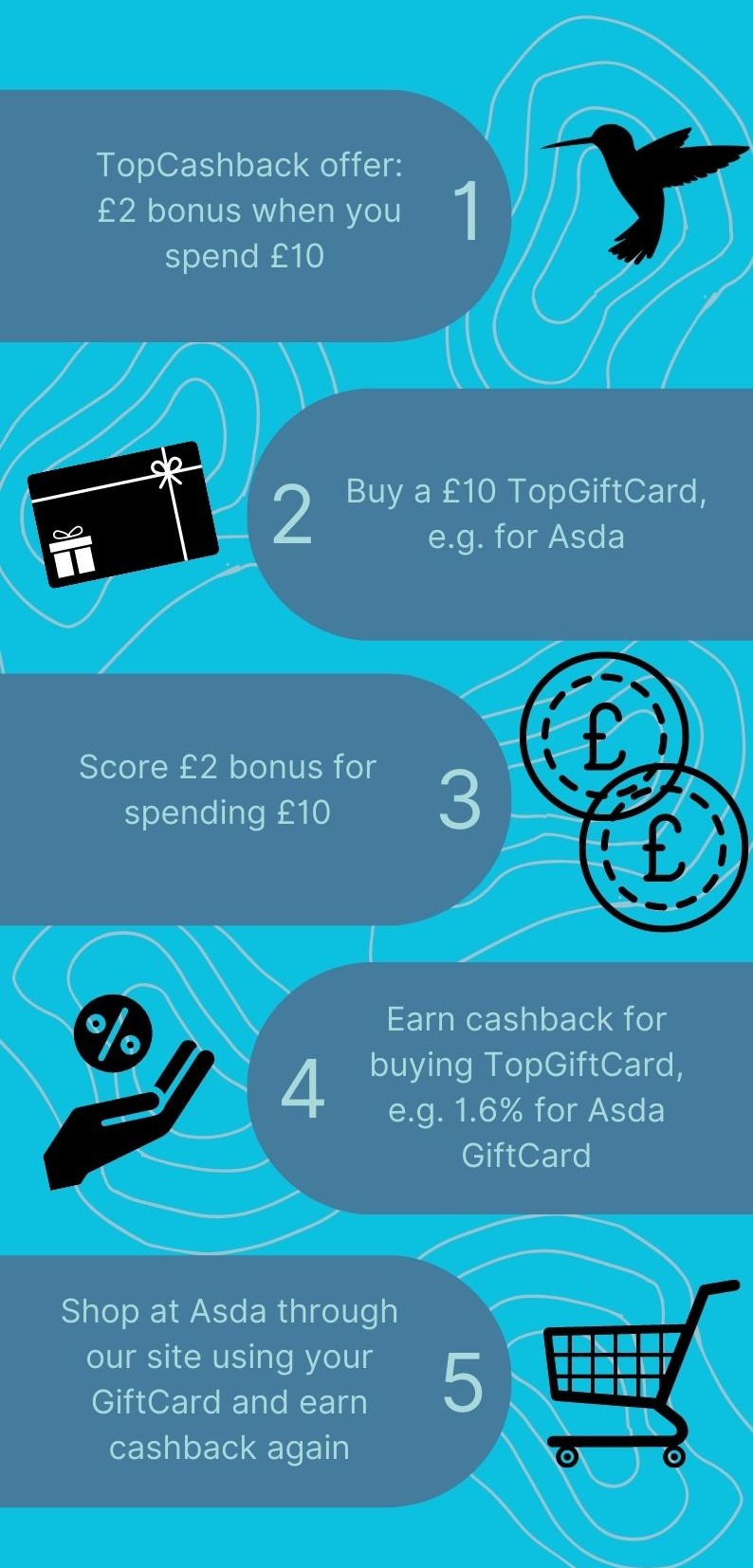
Stretch your food shop further
Around one-third of all food is wasted, which means we’re wasting money at the same time. Make the most of your cupboard contents by learning how and where to store your items for maximum shelf life.
30. Fridge vs cupboard
We’re not going to get into obvious items that go in the fridge, but there are some unsuspecting items you might not know about.
A point of contention is tomato ketchup, which should officially be stored in a cupboard at room temperature. The same goes for eggs; if you buy them on the shelf, then you don’t need to refrigerate them. Save your fridge space (and improve its efficiency) by knowing what needs to be in there and what doesn’t.
Most veggies, except for potatoes and onions, should be kept in the fridge in the designated drawer to keep them fresh. The temperature and moisture of a fridge can lead to rotting and mould for potatoes and onions, so keep them in a dry, dark place like in your pantry or a wicker basket.
Most fruits, except for bananas, do better in the fridge and will last longer. If you want them to ripen up quickly, pop them in the fruit bowl with the bananas so you can eat them sooner. Otherwise, separate other fruit from bananas if you want them to last longer.
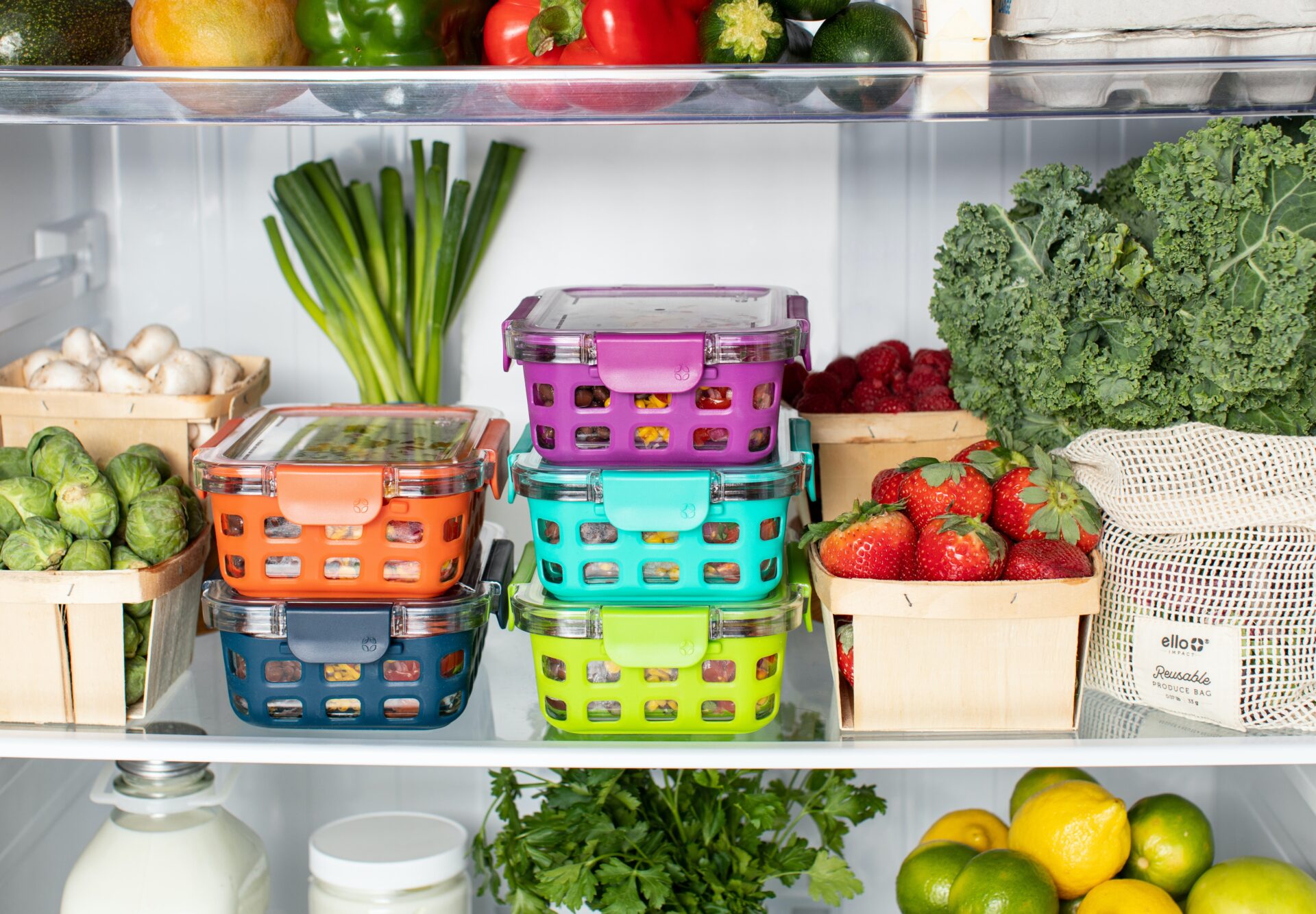
31. Store in water
Storing the right fruit and veg in water can hugely extend their shelf life. Items like carrots, lemons, celery, and cut potatoes should be completely submerged in water and kept in the fridge in an airtight container.
Asparagus, kale, and herbs should be popped upright with their stems or stalks in water, so you’ll need some vertical space in your fridge. It might be a little extra effort compared to keeping them in their original packaging, but you’ll save money and waste less.
Pro tip: Keep empty jars of store-bought sauces that are ideal for storing your veggies in water.
32. Cover with paper towels
Do you know the handy trick for keeping your leafy greens fresh so you can make a nice crisp salad?
Wash and prep the greens, cutting them up roughly, then pat dry, and cover with a paper towel inside an airtight container. This works for spinach and lettuce as well as pak choi, chard, and cabbage, although you should leave the latter three in their whole state.
The paper towel will absorb any moisture that makes your greens wilt and rot, which can happen quickly in soft plastic (that’s why you never get through the whole bag!). Not only will this keep them fresher for longer, but they’ll be prepped and ready to use when you reach for them.
33. Freezer storage
Did you know that the best place to store nuts is actually the freezer? Kept in the cupboard, nuts usually last around three months, but you can store them in the freezer for up to a year. Other surprise items include ginger and rice; you’ll actually find the ginger much easier to peel.
While bananas go brown almost immediately in the fridge, they keep well in the freezer if they’re starting to ripen too quickly, or if you want to use them for banana bread.
Got a large family of milk drinkers? Instead of popping to the shop every couple of days to buy more expensive stuff from your local, buy from your cheapest supermarket in bulk and put the excess in the freezer.
34. Bonus tip: regrow veg from your windowsill
You don’t need an allotment or even a garden to be able to regrow certain vegetables. There are a handful of veggies you can regrow right from your windowsill. Simply keep the roots after you’ve used your veggie, then place in a shallow tray of water and leave in the sun on your kitchen windowsill.
Try your hand at regrowing leeks, cabbage, celery, onions, and most herbs. You can also keep the tops of carrots, which will regrow the leafy green part you can chop up to make pesto.
Food for thought?
We hope our tips and tricks have given you some useful money-saving ventures. It can be very time-consuming to figure out how to save money on food shopping, so we hope you got as much out of this guide as we did putting it together. Whether it’s meal prep, a new app, or a handy trick that saves some pennies, it all adds up to valuable savings in our eyes.
We’ve pretty much exhausted our list of ways to save money on food, but we’re always eager to hear more.
Is there anything you think is missing from our guide or something you’d like to hear more about? Let us know in the comments below.


I use all Loyalty cards. If I see a good deal on long life products I stock up. Also- always buy a big pack of toilet roll!!
Checking offers on things we use before shopping! Making sure we use any coupons etc!
I sent my husband, he only buys what's on the list lol
I usually compare prices between around 4 different shops to get the cheapest option and it often saves me alot of money.
I do mine online as I find I'm too tempted in store to buy items I don't need. I also always search items I need which aren't on offer on my favourite items to see if I can get other brand of that items cheaper. At the end of the shop if I'm over my budget I then go through all my items again and remove things I can live without that week to try and keep to budget. I also use topcashback to buy my weekly shop and use nectar points off food when needed.